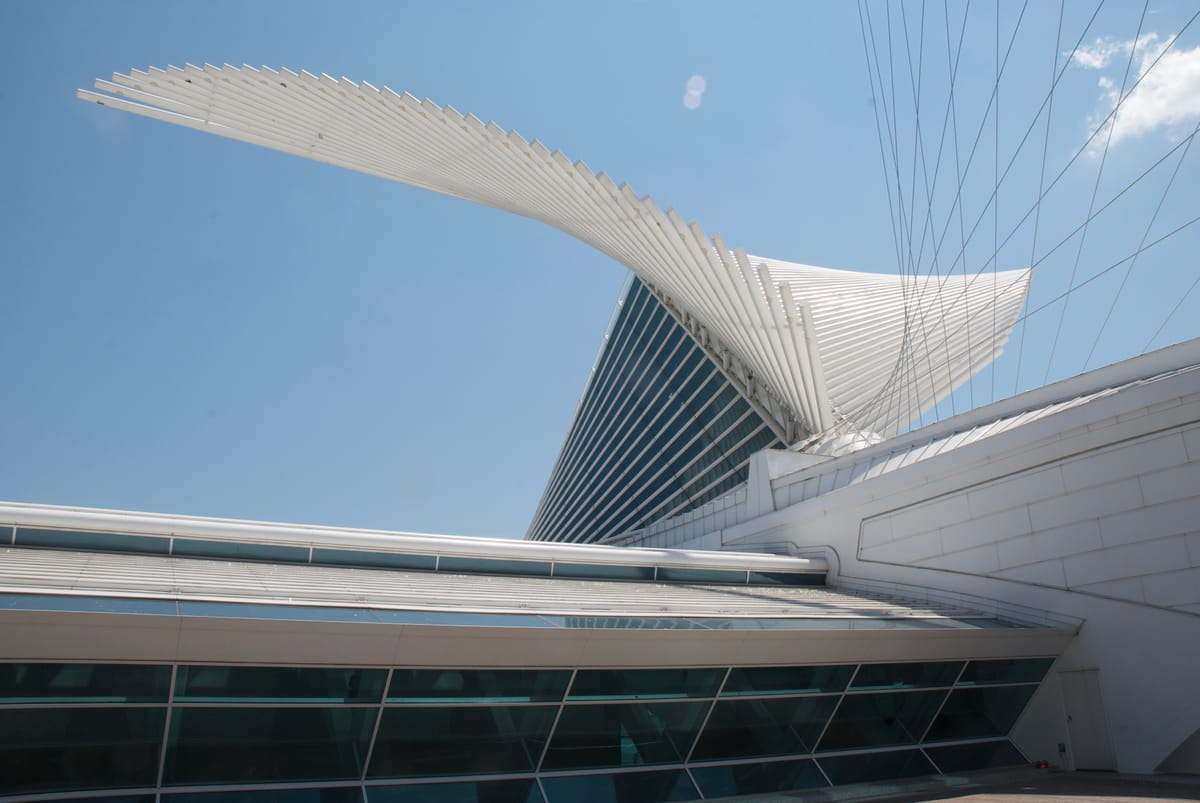Kinematics and Dynamics

For a long time, my favorite architect was Santiago Calatrava, who was also trained as a structural engineer. You could tell from his designs that he approached space differently—thinking about forces and movement as integral to the structural systems encapsulating them. Unlike many of his peers, he conveyed these ideas in an unusually expressive, metaphor-rich way, often comparing his creations to human bodies or animals. A prime example is the Milwaukee Art Museum, with its bird-like wing structure that even has kinetic capabilities, literally spreading its wings once or twice a day.
When I entered architecture school, I had high hopes that my structural engineering classes would be just as inspiring. To my dismay, those hopes were quickly dashed—calculating moments on simple beams and checking tables for precomputed values didn’t excite an eager young architect. The calculations lacked the elegance of the simple yet powerful Newtonian equations we used in high school physics, for example, to calculate satellite trajectories. Back then, it didn’t occur to me that I should have compared the structural engineering and architecture curricula more closely.
Fast forward 20 years, and here I am, revisiting the subject—this time with a better understanding. I now see that after Mechanics 1: Statics and Strength of Materials, structural engineering students typically move on to Mechanics 2: Kinematics and Dynamics as part of their bachelor's curriculum. So, in the winter semester of 2024 at TU Berlin, I decided to take on this challenge. And I was lucky—the mechanics professor Utz von Wagner turned out to be a kindred spirit, a fellow railway enthusiast. One day, he even invited the whole class to the Technical Museum Berlin to explain the mechanics of steam engines.
Today, I completed the second part of the portfolio exam in Kinematics and Dynamics. More than likely, I passed—but more importantly, I deepened my understanding of moving structures.